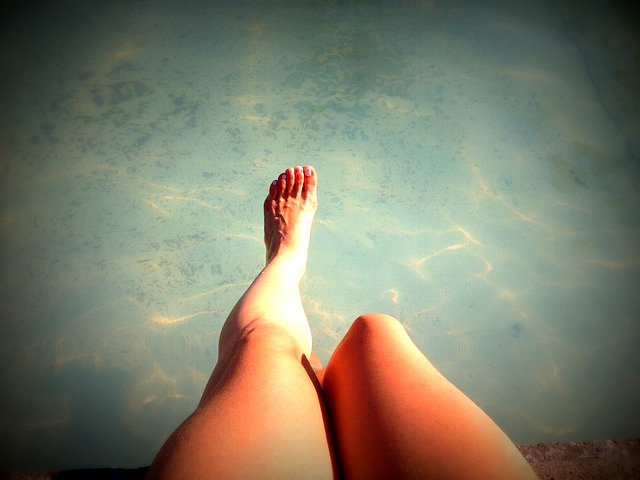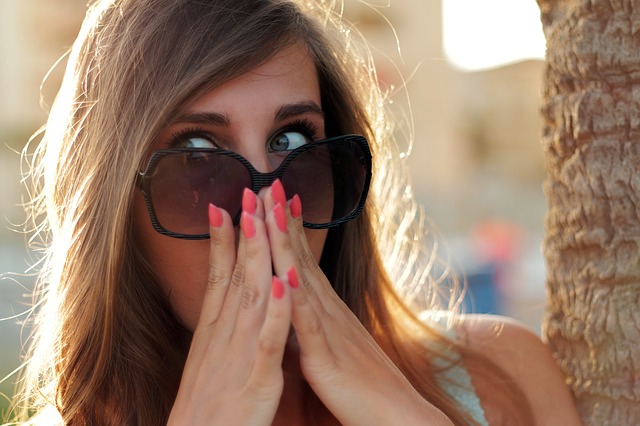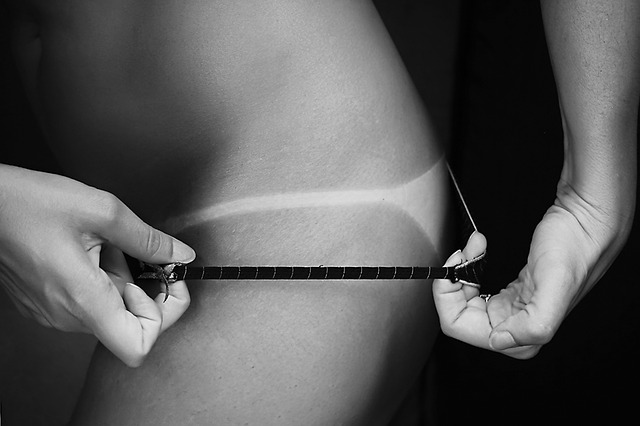Did you know that skin cancer is the most common cancer in Canada, yet it is also one of the most preventable. About 80,000 cases of skin cancer are diagnosed in Canada each year, more than 6,000 of which are melanoma, the mostly deadly form of skin cancer.
However, there are ways to protect yourself “The most effective way to lower the risk of developing skin cancer is to reduce your exposure to ultraviolet radiation (UVR),” says Dr. Janice Giesbrecht, Niagara Health System’s Director of Medical Oncology. “You can enjoy yourself outside as long as you protect yourself from the sun. And it’s important to protect against UV rays throughout the year, not just in the summer.”
Being properly informed is also important so we thought it important to take a look at some VERY COMMON myths around tanning that are completely false:
TOP MYTHS ABOUT TANNING
Myth: “A base tan protects you.”
It’s a dermatologist mantra: There. Is. No. Such. Thing. As. A. Safe. Tan. “A tan is literally your body’s response to being injured by UV exposure,” says Darrell Rigel, MD, a clinical professor of dermatology at New York University Medical Center.
When your cells are exposed to UV light, they produce more melanin, the pigment that colors your skin, which is why you tan. But this is a sign that damage has already been done, not protection against future sun exposure. In fact, a “base tan” provides the SPF equivalent of about a 4, says Steve Rotter, MD, a dermatologic surgeon in Virginia. (As a comparison, a white T-shirt gives you more coverage—about an SPF 7).
Myth: “80 percent of sun damage occurs before age 18, so the injury is already done.”
The latest thinking shows that you get closer to just 25 percent of total sun exposure by age 18—that 80 percent figure is outdated and inaccurate. Further, experts say revamping your sun habits at any age is a smart move. “It’s the same as smoking cigarettes—no matter how much damage you’ve done, it’s always good to stop,” says Rigel.
While it’s true that melanoma, the deadliest form of skin cancer, is more closely linked to childhood sunburns, “it’s cumulative sun exposure that’s associated with other skin cancers, not to mention wrinkles, thinning skin, dark spots, and ‘broken’ capillary veins on the skin,” says Jessica Wu, MD, Los Angeles dermatologist and assistant clinical professor of dermatology at USC School of Medicine.
Myth: “I have dark skin, so I don’t need to worry.”
“This is just profoundly, radically false,” says Ranella Hirsch, MD, a Boston dermatologist and past president of the American Society of Cosmetic Dermatology and Aesthetic Surgery. Many people with more pigment in their skin will have a lower skin cancer risk, says Rigel, but they’re not immune. One CDC paper found that up to 30 percent of darker-skinned ethnic groups reported at least one sunburn in the previous year.
“Unfortunately, skin cancer is frequently diagnosed later in people of color—perhaps because of the misconception that they are not at risk—so it’s often progressed to a later stage and is more difficult to treat,” says Wu. Singer Bob Marley, for example, died of melanoma on his toe that was misdiagnosed as a soccer injury.
Furthermore, skin color isn’t as simple as it sounds, because people are more heterogeneous than you think, explains Hirsch. So even if you have a dark complexion, you could have genes that make you more susceptible to skin cancer.
Myth: “As long as I protect my face, it’s OK.”
“Skin cancer loves anywhere the sun touches,” says Hirsch. You can get it on your arms, legs, back, feet, and chest. So while it’s good to protect your face, skipping the rest of you leaves you vulnerable. Not just to skin cancer, but signs of aging as well. Hirsch says she can often tell how old someone is simply by looking at the back of her hands—it’s a dead giveaway for years of unprotected sun exposure.
“Sun is the greatest threat to your skin’s health and youth,” Rotter agrees.
Myth: “Anything above SPF 15 is a waste.”
The FDA is still debating the merits of super-high SPFs, but many derms agree that there are meaningful differences between 15, 30, and 50, especially because we’re just so bad at applying sunscreen properly. “If you use SPF 50, you really get the protection of an SPF 20 based on how people actually apply it,” says New York City dermatologist Doris Day, MD. That includes both applying too little in the first place and not reapplying often enough (every two hours or so when you’re at the beach or pool all day). The doctors we talked to generally recommended a minimum of SPF 30 for everyday sunscreen and SPF 50 for long stints outside.
Myth: “But I need sun to get enough vitamin D.”
This is a common misconception. First, most people don’t apply sunscreen well enough to prevent skin from producing vitamin D. Second, you need much less time in the sun to make adequate levels than you might think. If your skin just kept making vitamin D in response to sunlight, it would reach toxic levels, explains Day. After 15 minutes or so, the system overloads and production stops. Being tan isn’t a good indicator of healthy vitamin D levels, says Ronnie Klein, MD, assistant professor, Yale Dermatology. One classic study of Hawaiian surfers found that although all participants were tanned, many were still vitamin D deficient.
“You can get enough vitamin D from a mix of diet, supplements, and incidental sun exposure,” says Klein.
Myth: “I don’t need sunscreen if it’s not ‘peak tanning hours.’”
Your likelihood of burning is worse when the sun is directly overhead—from about 10 a.m. to 2 p.m.—but dermatologists were unanimous that tanning at any hour of the day isn’t safe. Although UVB rays, which cause burning and some skin cancers, peak at mid-day, UVA rays, which contribute to aging and some skin cancers—are constant all day long, Klein says.
And Day says that she often sees the worst sunburns on cloudy days. “Clouds block infrared rays, so you don’t feel hot, but they only block 20 percent of UV rays so you can still get burned,” she says, noting that people often spend more time outdoors and skip sunscreen on cloudier days, which makes matters worse.
Myth: “Skin cancer isn’t that big a deal.”
Thankfully many skin cancers—when caught early and removed promptly—aren’t too damaging or life threatening. But assuming you can just get rid of a cancerous mole and move on is dangerous.
“I have several patients who have had skin cancers and have expressed that exact sentiment to me,” says Wu. “While non-melanoma skin cancer typically doesn’t travel throughout the body, it’s still cancer and will continue to destroy your skin and invade the tissues if it’s not removed. I tell them about the patient who had a basal cell skin cancer on her eyelid that invaded her eye and she ended up losing her eye. I’ve also had patients who have lost their noses and ears due to skin cancer. Some people still don’t believe me, so I show them the photos.”
And now, Here are some tips from the Canadian Cancer Society to protect yourself in the sun:
- Check the UV index before going outside. When the UV index is 3 (moderate) or higher, wear protective clothing, sunglasses and sunscreen.
- Try to reduce sun exposure between 11 a.m. and 4 p.m., when the sun’s rays are strongest, or any time of the day when the UV index is 3 or more.
- If possible, plan outdoor activities before 11 a.m. or after 4 p.m. If you are concerned about sun protection before 11 a.m. or after 4 p.m., check the UV index for your city that day to see what times it is expected to be over 3.
- Be aware that exposure to UVR can occur through glass. Glass windows can filter ultraviolet B (UVB) rays, but ultraviolet A (UVA) rays can pass through ordinary untinted glass (such as a car windshield).
- Seek shade or create your own shade when outside, especially between 11 a.m. and 4 p.m. Be prepared to make your own shade by taking along an umbrella. Trees and hedges can provide excellent shade. How much shade will depend on the density and the type of plant.
- Cover your arms and legs. Wear loose-fitting and tightly woven clothing that protects exposed skin from the sun, such as long pants, long-sleeved shirts and long skirts.
SOURCE: Niagara Health System, Rd.com, Cancer.ca
To receive similar content, “Like” us on Facebook @ https://www.facebook.com/niagarabuzz.ca
















